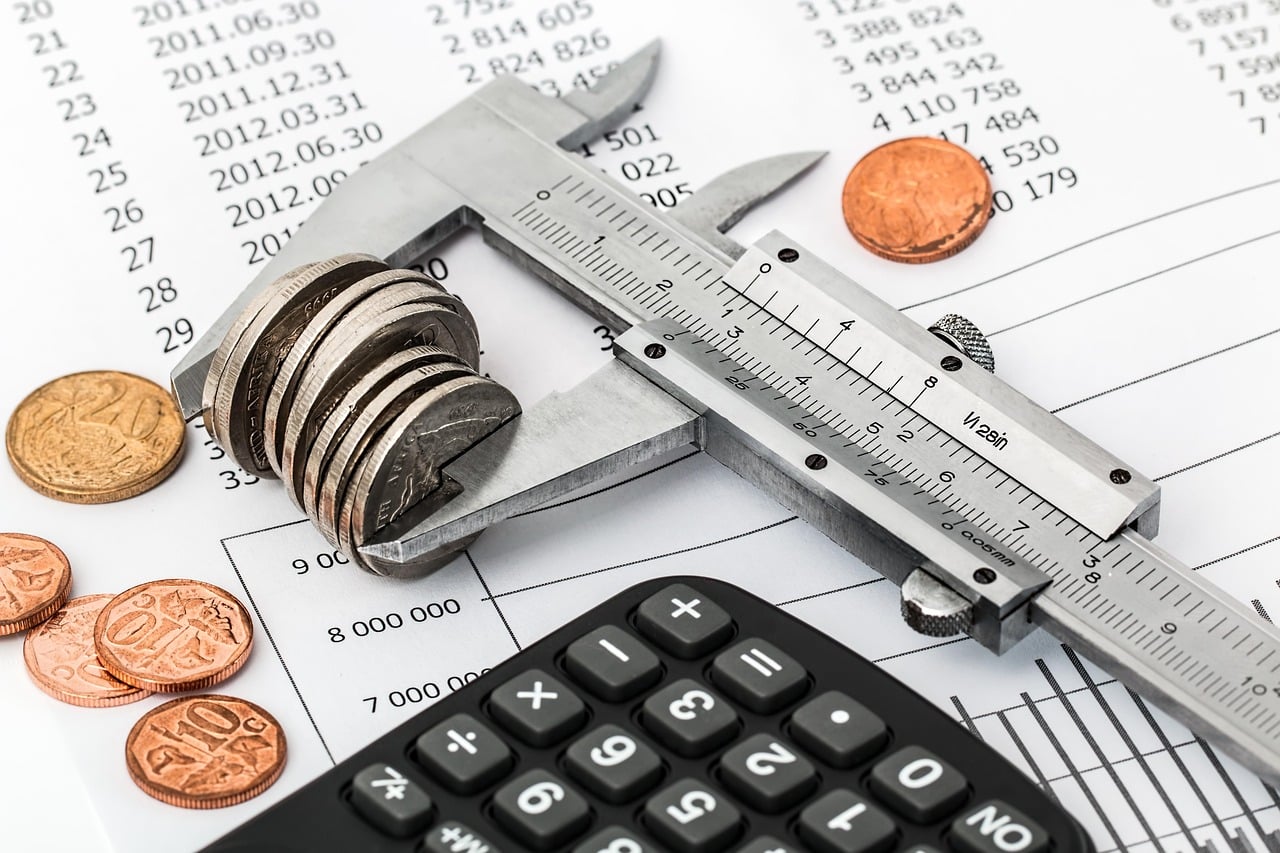How to Save Money Fast on a Low Income

Saving money on a low income can seem challenging, but it’s entirely achievable with a structured approach and disciplined financial habits. By clearly setting your savings goals, tracking expenses, and identifying practical areas to cut costs, you can steadily build your financial cushion—even on a limited income.
This guide will show you simple yet powerful strategies, from reducing unnecessary spending to boosting your income with smart side opportunities, enabling you to take control of your finances and move toward greater financial security.
Key Takeaways
- Set a savings goal; even small amounts can accumulate over time.
- Evaluate your spending habits and identify non-essential expenses to cut.
- Exploring side hustles or freelance work boosts your income.
- Consider high-yield savings accounts to maximize your savings.
Understanding Your Financial Situation
Taking control of your financial situation is essential for achieving both short-term stability and long-term goals. Effective money management begins by clearly understanding where your money comes from and where it goes. This awareness helps you budget wisely, prioritize your expenses, and create a secure financial future, no matter your current income level.
Building good financial habits early can greatly enhance your overall financial health and reduce stress. Regularly reviewing your financial situation can help you adapt to life changes and better manage unexpected expenses. According to a recent survey, about 56% of Americans don’t have enough savings to cover a $1,000 emergency, highlighting the importance of maintaining awareness of your finances and consistently building an emergency fund to safeguard your financial security.
How to Create a Realistic Budget
Developing a realistic budget is fundamental to achieving financial stability and reaching your financial goals. A well-structured budget clearly shows your income and expenses, enabling you to make informed decisions and avoid overspending. By tracking and planning your finances carefully, you’ll gain greater control over your money, increase your savings, and build a foundation for lasting financial health.
Listing Your Monthly Income
The first step toward creating an effective budget is clearly listing your monthly income. Include your main salary, earnings from side jobs or freelance work, and any financial assistance or support you may receive regularly.
Having a clear understanding of your total monthly income helps you manage your finances effectively, allowing you to allocate funds wisely for expenses, savings, and debt repayment.
Calculating Your Total Monthly Expenses
Once you’ve clearly defined your income, calculate your monthly expenses. Start with fixed expenses such as rent or mortgage payments, utilities, insurance, subscriptions, and loan repayments. Next, track variable expenses like groceries, dining out, entertainment, transportation, and shopping.
Reviewing these expenses closely allows you to identify patterns in your spending habits and highlights opportunities to reduce unnecessary costs. This comprehensive view of your monthly expenses helps you align your spending with your financial priorities.
Identifying Necessary and Discretionary Spending
It’s vital to clearly differentiate between essential needs and discretionary wants. Essential expenses includes rent, food, utilities, transportation, and healthcare. Discretionary expenses include non-essential items like dining out frequently, streaming subscriptions, entertainment, or luxury goods.
Learning to recognize and minimize discretionary spending allows you to allocate more resources to building savings, paying down debt, or preparing for unexpected expenses. Practicing mindful spending habits ensures your money goes toward what truly matters, improving your overall financial security and peace of mind.
Implementing Zero-Based Budgeting
Adopting a zero-based budgeting approach can boost your financial management. With zero-based budgeting, every dollar of your monthly income is intentionally assigned to specific categories, such as expenses, savings, investments, or debt payments.
Essentially, your total income minus total expenses equals zero. This approach encourages disciplined spending and ensures your money consistently works toward your financial goals. Over time, you’ll find this budgeting method helps build stronger financial habits, boosts your savings, and promotes greater peace of mind.
Tips on How to Save Money Fast on a Low Income
Establishing clear savings goals is crucial for successfully managing money, especially when you have a limited income. Clear goals provide motivation and structure, guiding your financial decisions and helping you reach your objectives faster. Whether you’re building an emergency fund, saving for a special purchase, or planning for a vacation, having specific financial targets helps maintain your focus and encourages disciplined saving.
Many people underestimate their ability to save even small amounts regularly, but consistent habits can impact your financial security. In fact, surveys show that 61% of Americans live paycheck to paycheck, highlighting the importance of proactive savings strategies.
Establish a Savings Goal
Setting defined savings goals gives your financial journey purpose and direction. Begin by categorizing your goals into short-term and long-term targets. Short-term goals might include saving for a new appliance or covering holiday expenses, while long-term objectives could involve building an emergency fund of at least $1,000 or more.
Clearly defined goals help you visualize your progress, stay committed, and allocate your income more effectively. It’s crucial to prioritize building an emergency fund. Having this safety net provides financial stability and peace of mind, particularly when dealing with unforeseen costs.
Automate Your Savings
Automating your savings simplifies the process and improves your ability to consistently save money, even on a low income. By scheduling automatic transfers from your checking to your savings account each payday or every month, you ensure consistent savings without relying solely on self-discipline. This approach minimizes temptation, reduces stress, and makes achieving your financial goals more achievable.
Automating your savings also helps you avoid common financial pitfalls, such as overdraft fees or late payments. Regular, predictable savings deposits help you steadily build a financial cushion, enhancing both your short-term financial stability and your ability to reach long-term financial goals.
Reduce Non-Essential Expenses
Another effective strategy to save money quickly, especially on a limited income, involves reducing discretionary spending. Identify areas where you regularly spend money on non-essential items, such as dining out, subscriptions, entertainment, or impulse purchases. Even minor adjustments—such as preparing meals at home instead of eating out or canceling seldom-used subscriptions—can result in meaningful monthly savings.
Small lifestyle changes can have a significant cumulative impact. For example, cutting back just $50 a month in discretionary spending results in $600 in annual savings. Over time, this strategy helps build your savings faster and empowers you to achieve your financial goals more efficiently.
Effective Ways to Reduce Non-Essential Spending
Cutting back on unnecessary expenses is essential for managing your budget effectively, especially when you’re working with a lower income. Reducing discretionary spending allows you to save money quickly and build financial security. By carefully evaluating your spending habits and focusing on key areas, you can increase your savings without drastically altering your lifestyle.
Review and Cancel Unnecessary Subscriptions
Many individuals unknowingly waste money on subscriptions and memberships they rarely use. In fact, 42% of consumers have forgotten about subscriptions they’re still paying for but no longer use, and more than 70% underestimate how much they spend each month on recurring charges, typically spending around $133 more than they think.
Carefully reviewing and canceling unused or rarely used subscriptions—such as streaming services, unused gym memberships, or premium apps—can free up substantial cash. Periodically checking your recurring charges ensures your money supports meaningful financial goals instead of unnoticed expenses.
Reduce Dining Out and Cook at Home
Dining out regularly is one of the quickest ways to overspend and derail your savings goals. On average, American households spend $3,693 annually eating at restaurants, according to the U.S. Bureau of Labor Statistics. To significantly cut expenses, reserve eating out for special occasions and cook at home more frequently.
Preparing your own meals is not only cost-effective but also healthier. This practice helps you save money, encourages healthier eating habits, and provides quality time spent with family or friends at home.
Purchase Second-Hand Items
Opting for second-hand or gently used items rather than new ones is another effective method of cutting spending. Whether it’s clothing, furniture, or electronics, buying second-hand through thrift stores, garage sales, or online marketplaces such as Facebook Marketplace or eBay offers considerable savings.
For instance, buying second-hand clothing alone can save you between 50% to 70% compared to retail prices. Beyond the financial benefits, choosing pre-owned items also contributes positively to the environment by reducing waste and promoting sustainable living.
Smart Ways to Save by Choosing Affordable Alternatives
Adopting affordable alternatives in your daily spending can improve your financial situation, especially on a limited budget. Making strategic choices—like reducing grocery bills, lowering utility expenses, and accessing community resources—helps stretch your money further and supports financial stability. Small, intentional changes can result in substantial monthly savings, easing financial stress. Below are some of the smartest ways to save:
Cut Down on Grocery Costs
Reducing your grocery expenses can lead to significant monthly savings. On average, Americans spend about $270 per week on groceries and more than $1,000 per month. This amount can easily increase without careful planning. Creating a meal plan, making shopping lists, and avoiding impulsive purchases help keep spending in check.
Choosing store brands over name brands, buying non-perishables in bulk, and utilizing coupons can also reduce grocery bills. Additionally, shopping at local farmers’ markets can provide affordable and fresh produce, helping you save money and eat healthier.
Lower Your Utility Expenses
Implementing minor changes at home can noticeably decrease your monthly utility bills. For example, switching from traditional incandescent bulbs to energy-efficient LEDs can reduce your energy usage. Taking shorter showers or installing low-flow showerheads reduces water usage, as standard showers use approximately 2.5 gallons per minute.
Moreover, automating bill payments can prevent costly late fees and keep your budget consistent, ensuring timely and stress-free management of monthly expenses.
Utilize Community Support and Assistance Programs
Leveraging community and government resources is another effective way to save money. Many local organizations and nonprofits offer discounted groceries, free meals, or low-cost household items to individuals and families in need. Additionally, government assistance programs, such as LIHEAP (Low Income Home Energy Assistance Program), help qualified households reduce their utility expenses.
Many eligible households are unaware or do not take advantage of such programs, missing valuable opportunities for savings. Actively seeking these resources can help ease financial burdens and support long-term economic well-being.
Practical Ways to Increase Your Income
Boosting your income is essential for improving your overall financial stability. There are various effective ways to supplement your earnings, such as pursuing side jobs or proactively seeking career advancement. By increasing your income, you can reach your financial goals faster, build your savings, and better manage everyday expenses.
Consider Starting a Side Hustle
Side hustles provide flexible opportunities to earn additional income without interfering with your primary job. Popular options include driving for rideshare apps like Uber or Lyft, delivering food with platforms such as DoorDash or Grubhub, or selling handmade products online through marketplaces like Etsy.
Freelancing in areas like writing, graphic design, or photography is also an excellent way to leverage your skills for extra cash. A well-chosen side hustle allows you to earn money on your own schedule while balancing other life commitments.
Seek a Raise or Promotion at Your Current Job
Another practical method to increase your earnings is by requesting a raise or promotion at your existing workplace. To strengthen your request, carefully assess your contributions—such as additional responsibilities taken on, improved productivity, or achievements that have positively impacted the company.
Research average salaries for similar roles within your industry to justify your desired compensation. Preparing a clear, well-supported argument that emphasizes your value demonstrates professionalism and commitment, increasing your chances of securing better pay and advancing your career.
Explore Passive Income Opportunities
Generating passive income is another effective strategy to boost earnings over time. Consider options such as renting out unused space in your home through platforms like Airbnb, investing in dividend-paying stocks or bonds, or creating digital products like ebooks or online courses that continue generating revenue with minimal ongoing effort.
Passive income streams can significantly supplement your primary earnings, helping you achieve financial independence and long-term stability.
Conclusion
Successfully saving money when you have limited income is about making strategic decisions, staying disciplined, and maintaining focus on your financial priorities. By setting clear goals, cutting back on discretionary spending, automating your savings, and seeking opportunities to boost your income, you’ll steadily build a strong financial foundation.
Consistency and patience are key: even small savings add up over time, leading to a more secure and stable financial future. Stay committed, keep track of your progress, and you’ll see positive financial results faster than you may expect.
FAQ
How can I save money on a tight budget?
To save on a tight budget, first, assess your finances. Track your monthly spending and spot non-essential costs. Use a zero-based budget to manage every dollar.
Look for ways to cut costs. Cancel subscriptions you don’t use and cook at home. These steps can help you save.
What are some easy ways to save money while grocery shopping?
Plan meals and make a shopping list to avoid impulse buys. Choose store-brand items over name brands. Use coupons, shop sales, and buy in bulk for savings.
How can I build an emergency fund with low income?
Begin by saving a small part of your income each month. Aim to save three to six months’ expenses. Automate your savings to reach your goal easier.
Are side hustles worth it for extra money?
Yes, side hustles can increase your income. Look for flexible jobs like freelancing or driving. This extra cash helps with savings.
How can I minimize my utility bills?
Lower bills by using less and investing in efficient appliances. Check for government help. Small habits, like turning off lights, save a lot over time.
How often should I review my budget?
Review your budget monthly. Adjust it as your income, expenses, or goals change. This keeps your budget up-to-date.
What are some valuable resources to help me save money?
Use community resources like food banks and housing help. Also, look for personal finance workshops. They offer support and guidance for saving.




